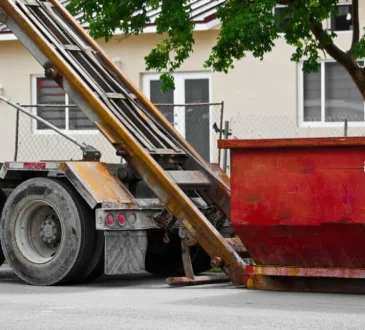
Understanding the Staffing Crisis in Fire Services
The Scope and Scale of Understaffing
Fire departments across the country face growing challenges due to insufficient staffing. Many cities report gaps in fire coverage during peak hours. Rural departments often struggle more, relying heavily on volunteer personnel. Urban areas experience high call volumes, stretching limited crews thin. These situations place firefighters and the public at greater risk.
Understaffing isn’t a new issue, but it’s worsening. Budget constraints and changing community demands contribute to this decline. Departments operate below recommended levels, often without backup support. Without proper resources, firefighters can’t respond as quickly or effectively. Communities deserve better protection and faster response times.
Factors Driving Staffing Shortages
Budget limitations remain a leading cause of low staffing in fire departments. Municipalities frequently redirect funds, leaving essential services underfunded. Fire chiefs struggle to hire when salaries don’t match the demands of the job. Retirement waves among seasoned personnel also create major gaps. U.S. Fire Administration. 2023. Many departments lack sufficient recruits to replace those leaving.
Additionally, the physical and emotional toll of the job leads to burnout. Long hours and dangerous conditions discourage career longevity. Firefighters need support, rest, and mental health resources. Without these, more staff members exit early. These combined issues create a cycle that’s difficult to break.
How Staffing Challenges Impact Operational Effectiveness
Increased Emergency Response Times
Every second counts during emergencies. Understaffed departments face delays that can cost lives. Fire engines sometimes leave the station with fewer crew members than necessary. As a result, critical tasks take longer at emergency scenes. Delayed responses increase the risk of property loss and injury. NFPA. 2021
Firefighters often cover multiple stations, stretching response areas. This approach causes inconsistencies in emergency coverage. During large incidents, departments may lack adequate backup. Dispatchers scramble to reroute units, increasing confusion. These problems directly affect community safety and trust.
Compromised Firefighter and Public Safety
Safety declines when staffing falls below national guidelines. Firefighters take on more responsibilities with fewer hands. This situation raises the chances of injury or fatality during operations. Lack of adequate personnel can delay rescues and limit fire suppression.
Reduced staffing affects civilian safety as well. For example, fewer firefighters on scene means slower evacuation support. Victims may face greater danger due to delayed aid. Limited crews also struggle with equipment setup. These delays weaken the overall effectiveness of the response.
Erosion of Morale and Team Cohesion
Firefighters rely heavily on teamwork. When staffing falls short, morale quickly declines. Crew members feel overwhelmed, unsupported, and frustrated. Repeated forced overtime contributes to exhaustion. This cycle leads to resentment and diminished job satisfaction.
Communication within teams suffers when members work constantly with different people. Trust takes time to build, and rotating crews hinder that process. A strong bond among team members improves safety and coordination. Inconsistent staffing disrupts that vital connection. Ultimately, morale and performance both suffer.
The Strategic Role of Labor Unions in Staffing Advocacy
Historical Overview of Firefighter Unionization
Labor unions in firefighting have a long and powerful history. The International Association of Fire Fighters (IAFF) formed in 1918 to address unsafe conditions. Since then, local union chapters have become essential voices in labor rights. Their efforts helped establish fair wages, safe staffing, and protective gear standards.
Over time, unions shaped national conversations about firefighter welfare. They advocated for modern safety practices and health benefits. Historical strikes brought attention to dangerous working environments. These actions laid the groundwork for current staffing negotiations. Union activism remains critical to departmental reform.
Core Union Functions Related to Staffing
Unions work tirelessly to negotiate staffing improvements. They pursue contracts that enforce minimum staffing ratios. These agreements ensure departments can’t operate with dangerously low numbers. Through collective bargaining, unions gain legal leverage to support safe conditions.
Shift limits and guaranteed time-off policies protect workers from burnout. Union contracts often prevent excessive forced overtime. These protections help firefighters recover and maintain performance. By prioritizing staff wellness, unions improve public safety. They balance departmental needs with worker rights.
Union Involvement in Staffing Policy Reform
Beyond contracts, unions push for broader policy changes. They engage in local and national lobbying efforts. Firefighter unions frequently testify at government hearings. These actions aim to secure funding and favorable staffing laws.
Union representatives also educate policymakers about operational risks. Their frontline experience adds credibility to their proposals. By framing staffing as a safety issue, unions win community and legislative support. Their influence often shapes municipal budget priorities. Effective union advocacy leads to long-term improvements.
Real-World Cases: Unions Responding to Staffing Crises
Case 1 – Brevard County, FL
In Brevard County, firefighters faced dangerous levels of forced overtime. The local union raised alarms about burnout and safety. They launched a public awareness campaign to spotlight the staffing shortage. Local media coverage amplified their concerns. As a result, public pressure mounted on county officials.
The union called for hiring more personnel and increasing wages. Negotiations focused on sustainable work hours. Their advocacy brought transparency to staffing decisions. Ultimately, these efforts led to changes in departmental policies. This case highlights how unions drive community-focused solutions.
Case 2 – Fort Worth, TX
Staffing policies in Fort Worth became a legal battleground. The fire union disputed the city’s new shift changes. They argued the changes violated their collective bargaining agreement. Union leaders engaged in arbitration and legal challenges. Their aim was to protect both safety standards and contract integrity.
The union emphasized how the policy affected response times. Their pushback encouraged public debate and political scrutiny. While negotiations continued, firefighters voiced concerns to local leaders. This case shows how unions can navigate legal channels to uphold agreements. It also underscores their role in holding governments accountable.
Case 3 – Illinois Ambulance Staffing Dispute
In Illinois, a fire union protested changes in ambulance staffing. Officials planned to reduce personnel per ambulance, sparking union opposition. The union cited safety and efficiency concerns. They argued reduced staffing endangered both EMTs and patients.
To counter the plan, union leaders held meetings and gathered public support. Arbitration provided a platform for their arguments. The process emphasized data and field experience. Ultimately, the case reinforced the need for stakeholder involvement. Transparent dialogue often yields more balanced solutions.
The Policy and Legislative Dimension
Staffing Mandates in National Fire Standards
National standards like NFPA 1710 guide staffing protocols. This standard outlines minimum crew sizes for different emergencies. However, adoption varies across states and municipalities. Some departments follow the guideline strictly. Others lack the funding to meet those benchmarks. NFPA 1710
Inconsistent application leads to unequal safety outcomes. Departments without enforcement mechanisms fall behind. Unions push for full adoption and legal enforcement. When applied correctly, these standards improve operational readiness. Mandated staffing levels save lives and reduce firefighter injuries.
How Unions Shape Public Policy
Unions don’t just react to policy changes—they help shape them. Many organize voter drives for ballot measures. These campaigns often focus on public safety investments. Unions also prepare data-driven testimony for legislative hearings.
Through organized lobbying, unions influence budget priorities. They form coalitions with other public sector workers. These joint efforts strengthen their voice in policymaking. Grassroots campaigns often begin within union ranks. Their impact extends beyond firefighting to broader community safety.
Political Obstacles to Staffing Reform
Not all lawmakers support union-led reforms. Some city officials resist increased staffing due to costs. Budget committees often view staffing as expendable. Political tensions sometimes overshadow operational realities. Anti-union sentiment further complicates negotiations.
Firefighter unions must navigate these political hurdles. They often counter with strong community outreach. Public support helps pressure reluctant policymakers. By staying focused on safety, unions shift the narrative. Legislative change takes persistence and collaboration.
Training, Education, and the Role of Leadership
Leadership Strategies for Mitigating Staffing Pressures
Effective leaders develop creative staffing solutions. Dynamic scheduling allows departments to adapt quickly. Rotating rest days and bonus shifts reduce fatigue. These strategies ensure adequate coverage during peak times. Leaders must also monitor stress levels among staff.
Retention programs play a vital role. Departments that reward performance build loyalty. Clear communication fosters trust and morale. Leaders who invest in people see better results. Leadership shapes how teams respond under pressure.
Those pursuing Fire Officer 2 Classes often learn advanced staffing strategies to strengthen team performance under pressure.
The Educational Path to Labor Literacy
Firefighters benefit from learning about labor relations. Training programs in negotiation and public policy offer valuable tools. Firefighter classes online can help professionals master negotiation and public policy essentials that support departmental leadership. These courses provide context for contract language. They also prepare firefighters to engage constructively with leadership.
Understanding labor laws protects workers’ rights. Educational programs promote awareness and unity. When firefighters understand the system, they advocate more effectively. These skills enhance both personal and organizational resilience. Education empowers firefighters to lead change.
Courses that support Florida fire inspector certification also enhance understanding of public policy and administrative responsibilities.
Completing Fire Instructor 1 Online programs builds communication skills essential for leadership and training roles.
Florida State Fire College classes offer valuable insights into labor regulations and staffing policy implementation.
Preparing Future Leaders for Union Interaction
Emerging leaders need strong interpersonal skills. Conflict resolution training improves communication with unions. Managers must listen and build trust during disputes. Transparency reduces friction in tense situations.
Joint training exercises with union reps strengthen collaboration. These interactions model respectful dialogue. Leaders who value union input make better decisions. Positive relationships lead to smoother contract negotiations. Fire Officer 1 Classes prepare future leaders to approach union relations with cooperation rather than confrontation.
The Community Impact of Staffing and Union Advocacy
Public Trust and Fire Department Readiness
Staffing levels directly influence public perception. Well-staffed departments respond faster and more effectively. Residents feel safer when coverage is reliable. Delays erode trust in emergency services. Community members expect quick, professional responses.
Unions often take the lead in public education. They explain how staffing impacts service quality. Open communication builds stronger relationships with residents. Transparency fosters civic engagement and shared goals. Communities that support unions often see better outcomes.
Financial Implications for Taxpayers
Firefighting costs can be significant. Overtime expenses increase when staffing is low. Full-time hires often prove more economical long-term. Predictable schedules reduce the need for emergency pay.
Unions advocate for smarter spending, not just more funding. They promote efficient staffing models that benefit taxpayers. Local levies sometimes fund these initiatives. Voters appreciate clear explanations of costs and benefits. Fiscal transparency builds public confidence.
Frequently Asked Questions (FAQ)
Common Reader Questions
How do labor unions help address staffing issues?
Unions negotiate contracts that set minimum staffing levels. They also advocate for resources to support safe operations.
Can better staffing improve firefighter morale?
Yes, adequate staffing reduces burnout and fosters teamwork. Firefighters feel more supported and perform better under safe conditions.
What role do citizens play in supporting staffing reform?
Citizens can vote for funding measures and engage with local leaders. Community support strengthens union efforts and improves safety.




